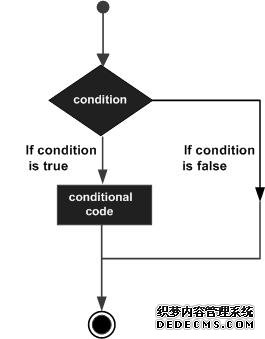
Python conditional statements are code blocks that are executed based on the execution results (True or False) of one or more statements.
You can simply understand the execution process of conditional statements through the following figure:

The Python programming language specifies that any non-0 and non-null value is true, and 0 or null is false.程Python programming IF statement is used to control the execution of the program. The basic form is:
IF judgment conditions:
execute statement ...
Lse:
execute statement ...
# coding = gb2312
flag = False
name = 'luren'
if name == 'python': # 判断变量否为'python'
flag = True # 条件成立时设置标志为真
print 'welcome boss' # 并输出欢迎信息
else:
print name # 条件不成立时输出变量名称
>>> luren # 输出结果# 例2:elif用法
num = 5
if num == 3: # 判断num的值
print 'boss'
elif num == 2:
print 'user'
elif num == 1:
print 'worker'
elif num < 0: # 值小于零时输出
print 'error'
else:
print 'roadman' # 条件均不成立时输出
>>> roadman # 输出结果num = 9
if num >= 0 and num <= 10: # 判断值是否在0~10之间
print 'hello'
>>> hello # 输出结果
num = 10
if num < 0 or num > 10: # 判断值是否在小于0或大于10
print 'hello'
else:
print 'undefine'
>>> undefine # 输出结果
num = 8
# 判断值是否在0~5或者10~15之间
if (num >= 0 and num <= 5) or (num >= 10 and num <=15):
print 'hello'
else:
print 'undefine'
>>> undefine # 输出结果



